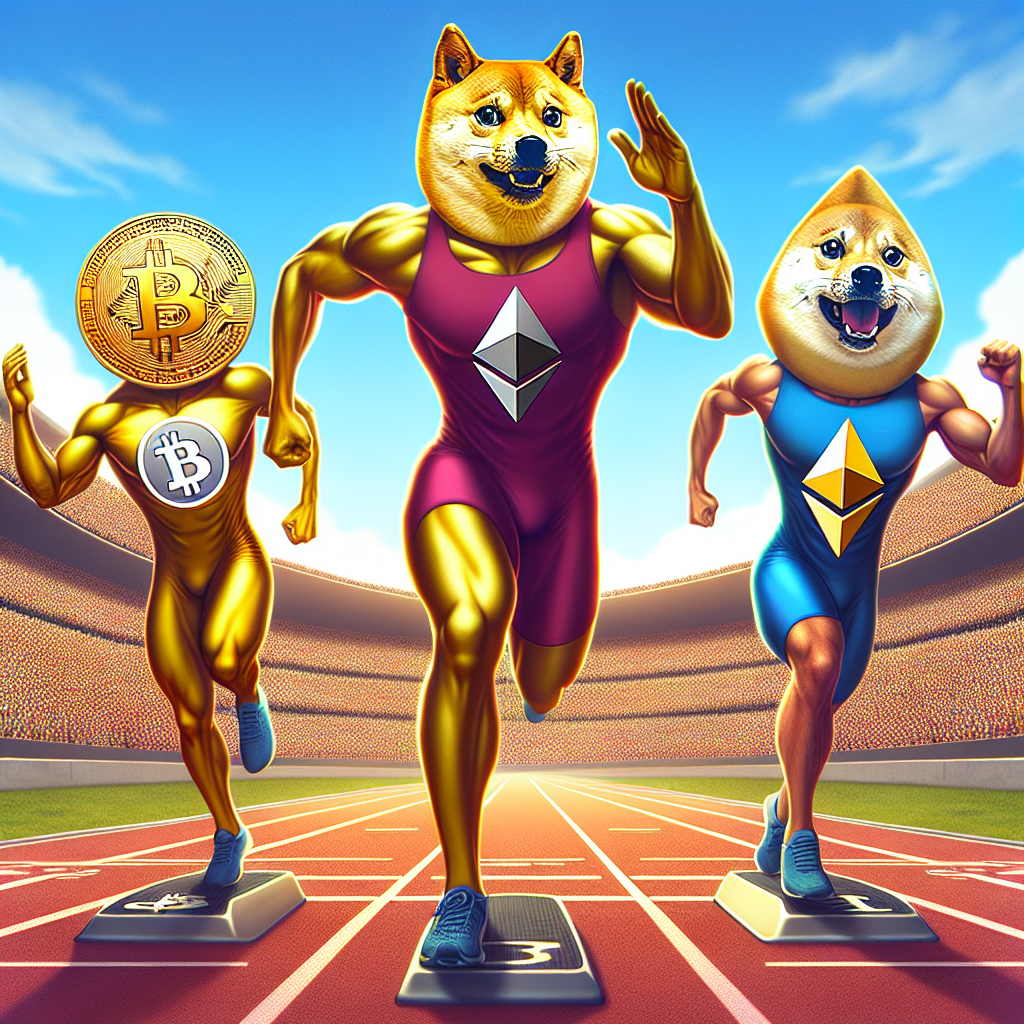Can Dogecoin Compete? Analyzing Its Position Against Bitcoin and Ethereum
In the ever-evolving landscape of cryptocurrency, Dogecoin has emerged as a peculiar player. Initially created as a joke in 2013, this meme-inspired digital currency has gained a significant following, buoyed by social media campaigns and endorsements from high-profile figures, most notably Elon Musk. As the cryptocurrency market continues to mature, the question arises: Can Dogecoin truly compete against the titans of the industry, Bitcoin and Ethereum?
Origin and Purpose
Dogecoin was introduced with the aim of making cryptocurrency more accessible and enjoyable. Its branding was a nod to the popular "Doge" meme featuring a Shiba Inu dog, and it quickly became a community-driven project. Unlike Bitcoin, which was designed as a peer-to-peer monetary system, and Ethereum, which aims to facilitate smart contracts and decentralized applications (dApps), Dogecoin’s primary purpose was to serve as a tipping system on social media platforms.
Market Position and Adoption
Bitcoin, often referred to as digital gold, is the market leader, commanding substantial investor confidence and security within its blockchain. With a fixed supply of 21 million coins, Bitcoin has established itself as a hedge against inflation, attracting institutional investors and mainstream adoption.
Ethereum, on the other hand, has carved out its niche as the leading platform for decentralized applications. Its infrastructure enables developers to create smart contracts and innovative decentralized finance (DeFi) solutions. As the second-largest cryptocurrency by market capitalization, Ethereum is pivotal in driving blockchain technology forward.
In juxtaposition, Dogecoin currently sits among the top ten cryptocurrencies, his position buoyed by robust community support and media visibility. However, it significantly lacks the foundational layers that Bitcoin and Ethereum offer, such as scarcity and utility beyond mere transactions.
Technological and Utility Differences
Technologically, Dogecoin operates on a proof-of-work consensus mechanism similar to Bitcoin but without a capped supply. This inflationary model means that there are no scarcity-driven incentives that Bitcoin possesses, potentially impacting long-term value retention.
In contrast, Ethereum has made significant strides with the transition to proof-of-stake (Ethereum 2.0), enhancing security and energy efficiency while allowing for scalability. The richness of Ethereum’s ecosystem—teeming with NFTs, DeFi projects, and DAOs—presents a vast utility that Dogecoin cannot parallel.
Community and Cultural Influence
Dogecoin’s community is one of its greatest assets. The “Doge Army” is known for its lighthearted approach to cryptocurrency and its philanthropic efforts, including raising funds for charitable causes and sponsoring events like NASCAR races. The sense of camaraderie and fun surrounding Dogecoin is undeniably appealing and has helped maintain its relevance in the crypto landscape.
However, its reliance on celebrity endorsements and social media trends poses a risk. Cryptocurrencies like Bitcoin and Ethereum are increasingly being viewed as serious investments, while Dogecoin’s identity is still romantically tied to its meme origins.
Challenges Ahead
Despite its success, Dogecoin faces several challenges. The lack of a clear development roadmap and an innovative team compared to Bitcoin and Ethereum raises questions about its long-term viability. While Bitcoin’s legacy and Ethereum’s expanding utility seem set for a bright future, Dogecoin has yet to demonstrate a sustainable path beyond its community-based approach.
Additionally, with increasing regulatory scrutiny and market volatility, Dogecoin’s volatility could deter serious investors. The fear of being labeled merely a meme coin may hinder its ability to gain respect as a legitimate asset class.
Conclusion
In summary, while Dogecoin has carved out an intriguing niche within the cryptocurrency market, it operates in a vastly different orbit compared to Bitcoin and Ethereum. Its unique community and cultural significance cannot be overlooked, yet the path to competing as a serious cryptocurrency appears fraught with challenges. For Dogecoin to truly compete, it would need to evolve beyond its meme status, developing its technology, utility, and real-world adoption.
Ultimately, Dogecoin may not need to outpace Bitcoin and Ethereum to be deemed successful. Its place as a fun, community-driven crypto asset allows it to thrive in its lane, catering to a demographic that enjoys the lighter side of fintech. However, whether it can sustain this position in the face of growing competition remains a question that time alone will answer.

